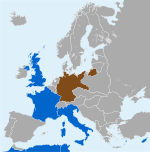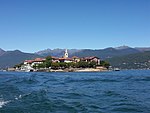Gignese
Cities and towns in PiedmontMunicipalities of the Province of Verbano-Cusio-OssolaProvince of Verbano-Cusio-Ossola geography stubs

Gignese is a comune (municipality) in the Province of Verbano-Cusio-Ossola in the Italian region Piedmont, located about 110 kilometres (68 mi) northeast of Turin and about 8 kilometres (5 mi) south of Verbania. As of 31 December 2004, it had a population of 913 and an area of 14.9 square kilometres (5.8 sq mi).The municipality of Gignese contains the frazioni (subdivisions, mainly villages and hamlets) Alpino Cignese, Nocco, and Vezzo. Gignese borders the following municipalities: Armeno, Brovello-Carpugnino, Omegna, Stresa.
Excerpt from the Wikipedia article Gignese (License: CC BY-SA 3.0, Authors, Images).Gignese
Via al Panorama,
Geographical coordinates (GPS) Address Nearby Places Show on map
Geographical coordinates (GPS)
| Latitude | Longitude |
|---|---|
| N 45.866666666667 ° | E 8.5166666666667 ° |
Address
Golf Club Alpino di Stresa
Via al Panorama
28839
Piedmont, Italy
Open on Google Maps











